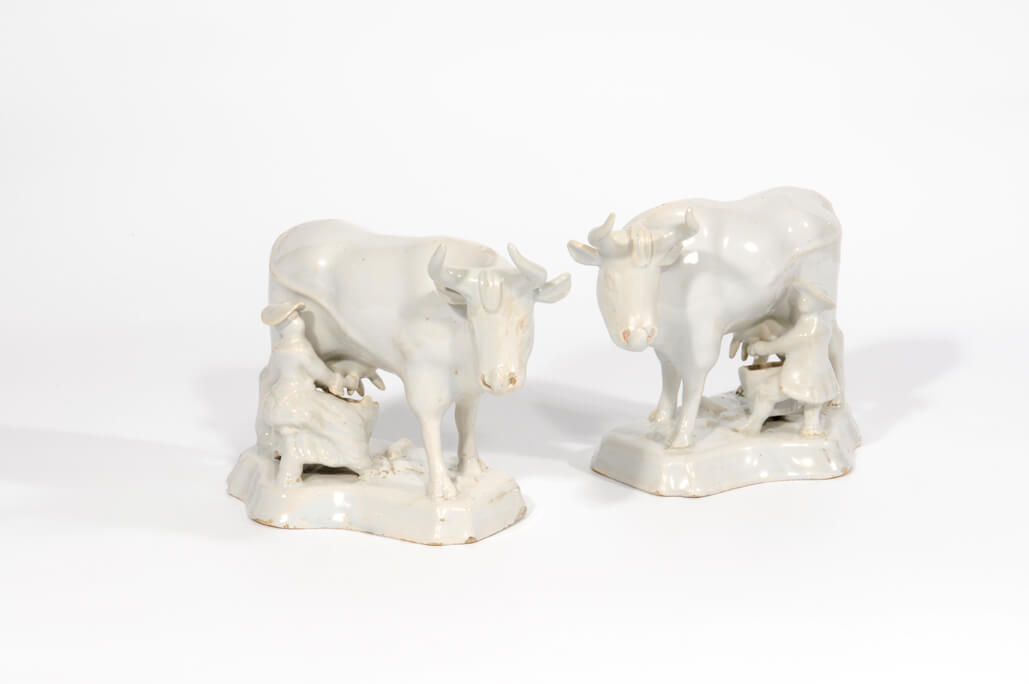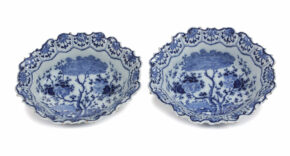
[popup_trigger id=”13756″ tag=”span”]![]() [/popup_trigger]
[/popup_trigger]
Images on this website are licensed under a
Creative Commons Attribution-NoDerivs 3.0 Unported License.
OBJECT
C59. Pair of White Delft Milking Groups
Delft, circa 1770
Modeled standing affronté with slightly turned heads, and being milked by a seated lad or a maid wearing a round broad-brimmed hat, on a high chamfered rectangular base with a serpentine front.
Heights: 17.8 cm. (7 in.)
Note:
Faience with an undecorated white tin glaze was first produced in Italy around 1550. Primarily dishes and other large vessels, the ilk became known as ‘bianchi di Faenza’, and eventually simple objects such as plates, jugs or bowls, were made in serial production to serve as affordable utilitarian wares. It is likely that from the late sixteenth century onwards, the Delft potters produced white tin-glazed wares after the Italian prototypes.
Research and discussions continue as to whether many of the white-glazed and unpainted groups, such as the present pair of cows with milkers, were cold-painted after their production, perhaps outside of the factory, and that this unfired and thus relatively perishable form of decoration might either have worn off or have been removed intentionally for aesthetic reasons at a later date (see D.F. Lunsingh Scheurleer Delft. Niederländische Fayence 1984, p. 80; and D.F. Lunsingh Scheurleer, Wit Delfts 1970). On the other hand, it can be assumed that white-glazed, unpainted objects were produced specifically as more affordable alternatives to the more labor intensive, and thus more costly, decorated examples.
For a more recent comprehensive study on white Delftware, see Barbara Verspuij, “Wit Delfts Aardewerk”, 2 volumes, unpublished MA-thesis, Leiden (Leiden University) 2008, who includes a discussion of the various models of cows in white Delftware, vol. 2, pp. 573-605.
Similar examples:
A comparable pair of white Delft cows, but accompanied by calves, is illustrated in Aronson 2008, p. 105, no. 74.
Provenance:
Probably J.F.H.H. Beekhuizen, Amsterdam








